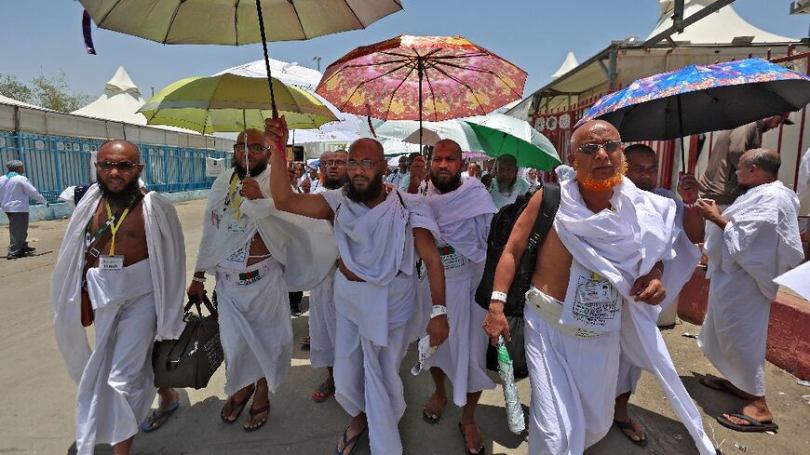In preparation for the Hajj, one of the world’s largest religious gatherings and the fifth pillar of Islam, pilgrims streamed into Mecca’s Grand Mosque on Saturday to perform their final rituals before traveling to Mina.
Their fervent recitations echoed through the white marble courtyards of Islam’s holiest site as they performed the tawaf, or walking around the Kaaba. The cube-shaped structure was covered in a black and gold embroidered cloth.
Due to the sheer volume of participants, those occupying the ground floor that was closest to the Kaaba shuffled. People who lived on the upper floors could walk faster and even run. During the tawaf, pilgrims extended their hands in adoration, snapped pictures or videos, and called their loved ones.
They then ran or walked between two hills to retell the story of Hagar’s search for water for her son Ismail, which is told in Muslim, Christian, and Jewish traditions in a variety of ways.
The Hajj requires pilgrims to enter a state of spiritual purity known as ihram.
In an effort to foster unity between the wealthy and the poor, men must wear seamless white robes. Body and hair are covered by women.
Pilgrims flocked to the numerous shops and air-conditioned malls encircling the Grand Mosque to unwind before the strenuous days that lie ahead during the intervals between rituals and the five daily prayers, which bring the area to a solemn standstill. They also sought shade, snacked, and visited the malls.
After three years of drastically reduced numbers as a result of the pandemic, Saudi Arabia has restored full pilgrim capacity for this year’s Hajj, with over 2 million Muslims expected to participate.
Mahboub Morshed, a Bangladeshi software engineer who is 42 years old, said, referring to the lower attendance of previous years, “I think this year (the) crowd is too much.” However, the government and this management (Ministry of Hajj and Umrah) are working hard to keep things running smoothly.
